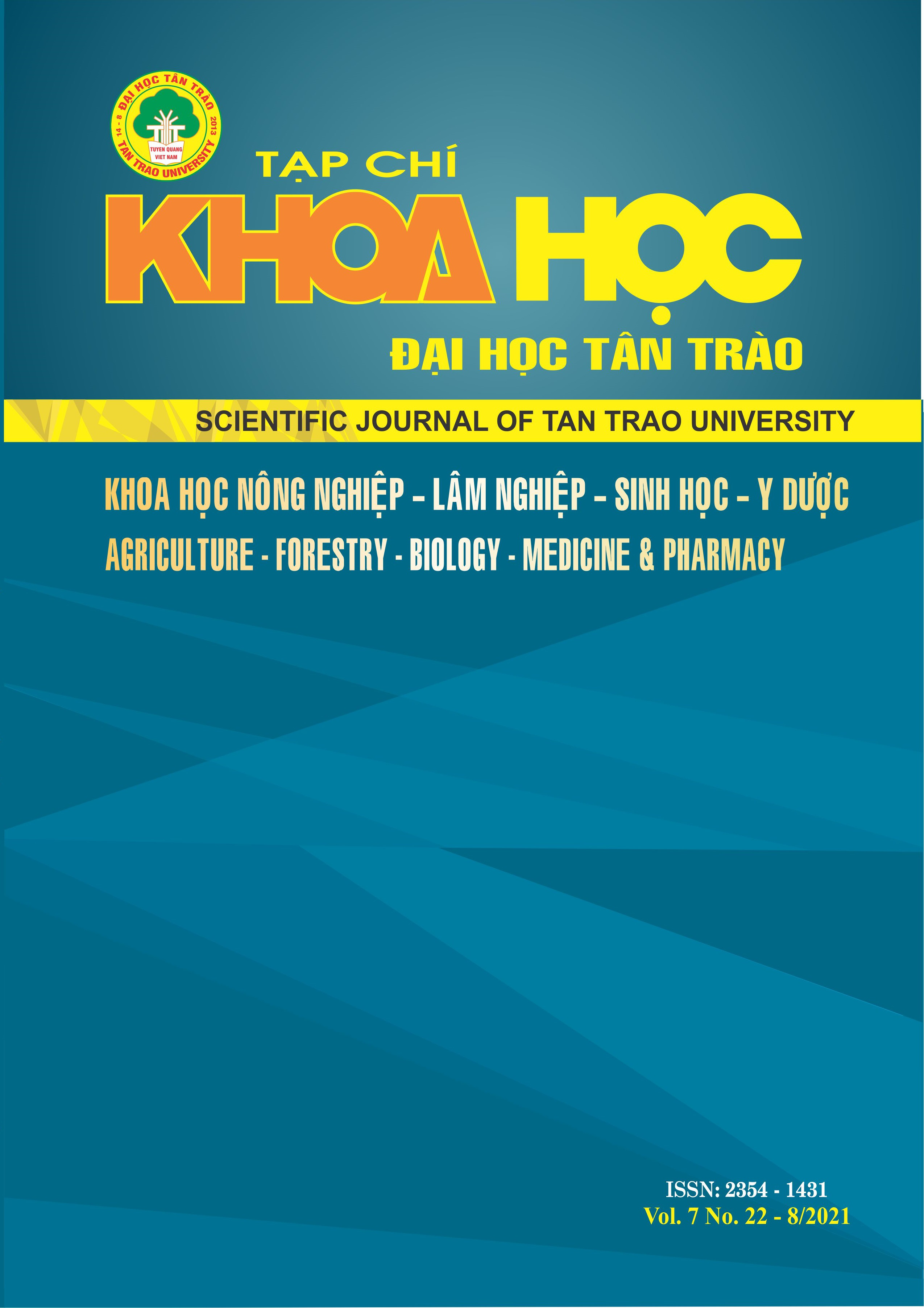RESEARCH CHARACTERISTICS OF AVIAN INFLUENZA AND DETERMINATION OF H5N1 NAVET-VIFLUVAC VACCINATION RATE FOR POULTRY IN QUANG NINH PROVINCE
DOI:
https://doi.org/10.51453/2354-1431/2021/520Keywords:
Epidemiological Characteristics, Avian influenza, Vaccine, Quang NinhAbstract
Research results show that in the period 2015-2020, Quang Ninh province always had avian flu epidemics; However, outbreaks only occurred on a small scale in some districts, cities and towns. The epidemic mainly occurred in the Winter - Spring crop with 91.46% of the poultry infected with influenza and 90.71% of the poultry killed and culled due to influenza were recorded in this season; only 8.54% of poultry got sick and 9.81% of poultry died and was destroyed due to flu in the summer-autumn crop; The incidence of avian influenza varies by type of poultry, in which the highest infection rate in chickens is 64.98% and the lowest rate in quail is 2.54%. Every year, flu vaccination results for poultry flocks in Quang Ninh province always reach a high level of over 90%. Monitoring 1,550 poultry after vaccination in 5 districts, cities and towns in Quang Ninh province found that vaccines used to prevent disease are safe for poultry; 95.10% of poultry have no side effects after injection; the rest appeared a few mild reactions, did not have a big impact on the health of poultry.
Downloads
References
[1] The Department of Livestock and Animal Health of Quang Ninh Province . (2018). Summary report on the prevention and control of avian influenza in the period of 2014 – 2018, Vietnam.
[2] Department of Animal Health . (2004). Avian influenza and preventive measures. Agricultural Publishing House, Hanoi, Vietnam.
[3] Giang, D. T. V., Huong, D. T. V., Huyen, V. T. A. (2019). Avian flu situation in Quang Ninh 2013 – 2018. Journal of Animal Science and Technology.
[4] Lan, H. T. N. (2017). Study on some epidemiological characteristics of avian influenza and the immune response of chickens and ducks with inactivated H5N1 vaccine, RE-5 strain in Quang Ninh province, Master Thesis Animal Medicine, Thai Nguyen University, Vietnam.
[5] Phuc, T. V. (2015). Research on some epidemiological characteristics, prevalence of avian influenza virus and efficiency of using H5N1 vaccine in the field in Thai Nguyen province, Master's thesis in Veterinary Medicine, Thai Nguyen University, Vietnam
[6] Son, N. T. (2018). Research on some epidemiological characteristics, prevalence of avian influenza virus and disease prevention effectiveness of A.H5N1 flu vaccine in Thai Nguyen province, Master's thesis in Veterinary Medicine, University Thai Nguyen, Vietnam.
[7] Thanh, T. L., Khanh, D. T. (2009). Field trial for avian influenza H5N2 vaccine imported from the Netherlands and China. Part 1: Vaccine safety and chicken immune response after vaccination. Journal of Veterinary Science and Technology, 16(1):10-18.
[8] Fuller, T. L., Ducatez, M. F., Njabo, K. Y., Couacy-Hymann, E., Chasar, A., Aplogan, G. L., Lao, S., Awoume, F., Téhou, A., Langeois, Q., Krauss, S., Smith, T. B. (2015). Avian influenza surveillance in Central and West Africa, 2010-2014. Epidemiol Infect, 143(10): 2205 - 2212.
[9] Thanh, N. N. (2001). Textbook of Veterinary Epidemiology, Agricultural Publishing House, Hanoi, Vietnam
[10] Thien, N. V. (1997). Research methods in animal husbandry. Agricultural Publishing House, Hanoi, Vietnam.
[11] Thien, N. V. (2008). Research methodology in animal husbandry. Agricultural Publishing House, Hanoi, Vietnam.
Downloads
Published
How to Cite
Issue
Section
License

This work is licensed under a Creative Commons Attribution-ShareAlike 4.0 International License.
All articles published in SJTTU are licensed under a Creative Commons Attribution-ShareAlike 4.0 International (CC BY-SA) license. This means anyone is free to copy, transform, or redistribute articles for any lawful purpose in any medium, provided they give appropriate attribution to the original author(s) and SJTTU, link to the license, indicate if changes were made, and redistribute any derivative work under the same license.
Copyright on articles is retained by the respective author(s), without restrictions. A non-exclusive license is granted to SJTTU to publish the article and identify itself as its original publisher, along with the commercial right to include the article in a hardcopy issue for sale to libraries and individuals.
Although the conditions of the CC BY-SA license don't apply to authors (as the copyright holder of your article, you have no restrictions on your rights), by submitting to SJTTU, authors recognize the rights of readers, and must grant any third party the right to use their article to the extent provided by the license.


